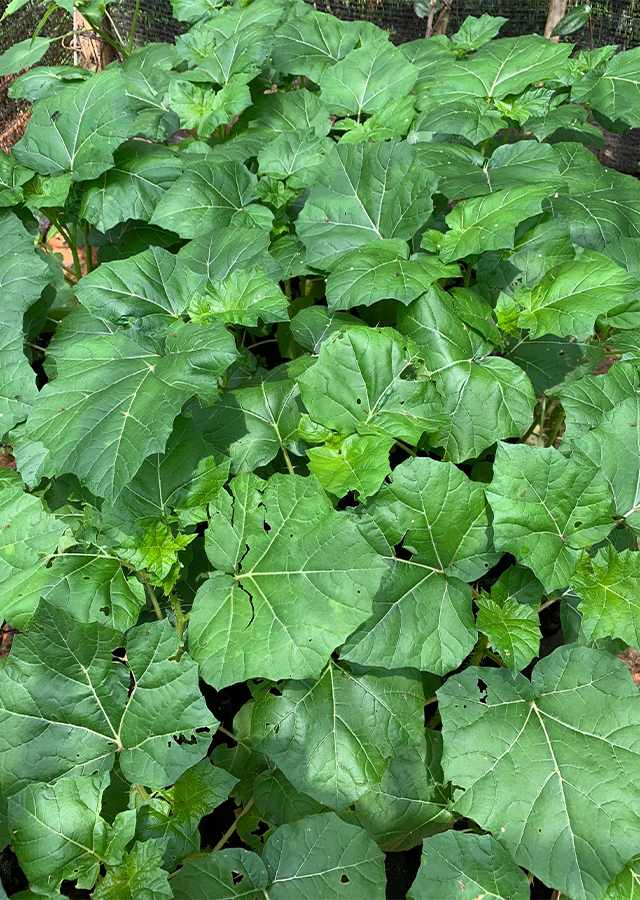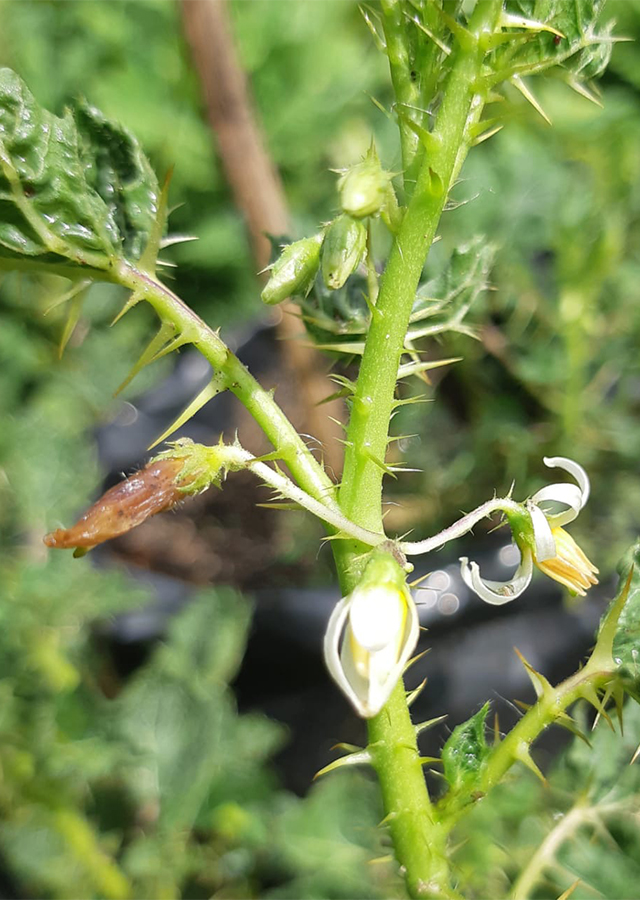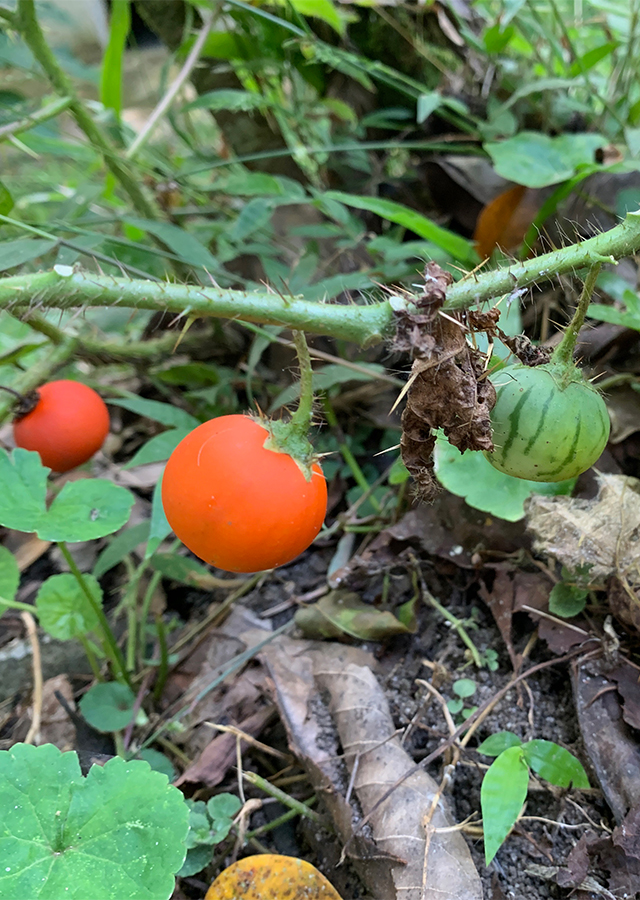The Devil's Apple
Solanum capsicoides All.
Solanaceae
Location in our garden
Principal



Synonym
Solanum aculeatissimum var. denudatum Dunal
Solanum arrebenta Vell.
Solanum bodinieri H.Lév. & Vaniot
Habitus
Herbaceous. Annual to short-lived perennial plant; it can grow 30 - 100 cm tall.
Part Used
Leaves
Fruit
Roots
Growing Requirements
Full Sunshine
Need Shade
Habitat
Forest
Roadside
Shrublands
Grassland
Overview
Originally native of coastal Brazil, it is spreading as a cultivated plant and weed throughout tropical and subtropical areas of the world. The plant is sometimes harvested from the wild for local use as a food and medicine. It is sometimes cultivated as an ornamental for its decorative fruits.
Vernacular Names
Mata cucaracha (Spanish), Niu qie zi (Chinese), Khuea hin (Thailand), Terong asam hutan (Malaysia), Akaaka (USA/Hawaii), Guldbärsskatta (Sweden).
Agroecology
It is a pioneer species and generally prefers lowland of humid or seasonally humid warm subtropical or tropical areas nearly or quite free from frost at elevations up to 1,500 m. Probably preferring sandy habitats but also recorded from wet alluvial clay and limestone derived soils.
Morphology
- Root - long, cylindrical and branched having long thin rootlets. External surface is rough in texture and brown in colour, it tastes bitter and is odourless.
- Stems - that become more or less woody, muchbranched plant, the prickly stems sprawling and often appearing scandent.
- Leaves - entire or with a few lobes, about as long as wide, broadly ovate to suborbicular, armed on both surfaces with straight acicular prickles, the large prickles similar to those of the petiole.
- Only the lower 1 or 2 flowers long-styled and fertile, the rest short-styled and staminate, corollas 1.5–2 cm in diameter, white, glossy light greenish at base, stellate.
- Fruit - a globose berry, 2–3.5 cm in diameter, the pericarp 2.5–4 mm thick, tough, bright matte orange, glabrous, the endocarp white, spongy, with scant tasteless watery sap.
- Seeds - 175–415 per fruit, 4–6 mm long, 4-5 mm wide, flattened and irregularly circular, straw-colored, winged, the wing 0.8–1.5 mm wide.
Cultivation
Generative propagation is by seed.
Chemical Constituents
Flavonoids, coumarins, alkaloids, tannins, steroids, saponins, phenol, resin, glycoside.
Traditional Medicinal Uses
- It has anticholinergic activity and is used to treat smooth muscle spasms, hypersecretion and pain.
- Prevention and curing of various skin disorders.
- Treatment of kidney inflammation, diarrhoea, skin bleeding and transudates.
- Antimicrobial and wound healing activity though their action confined in their chemical composition.
- It is used as the source of Kantakari in ayurveda, an important therapeutic agent for dislodging tenacious phlegm.
Part Used
Reference Sources
- Royal Botanic Gardens.(2021). Solanum capsicoides All. http://www.plantsoftheworldonline.org/taxon/urn:lsid:ipni.org:names:330645-2.


